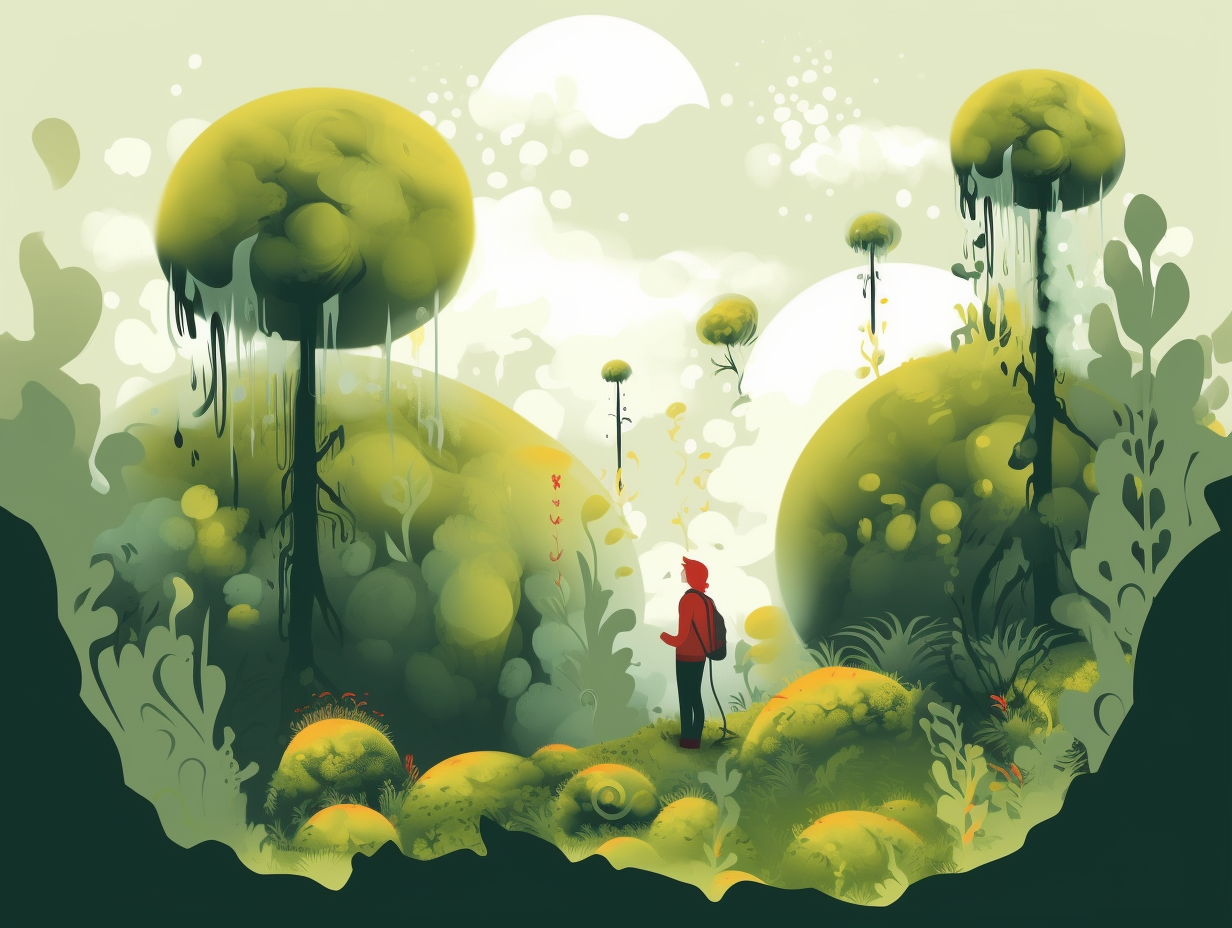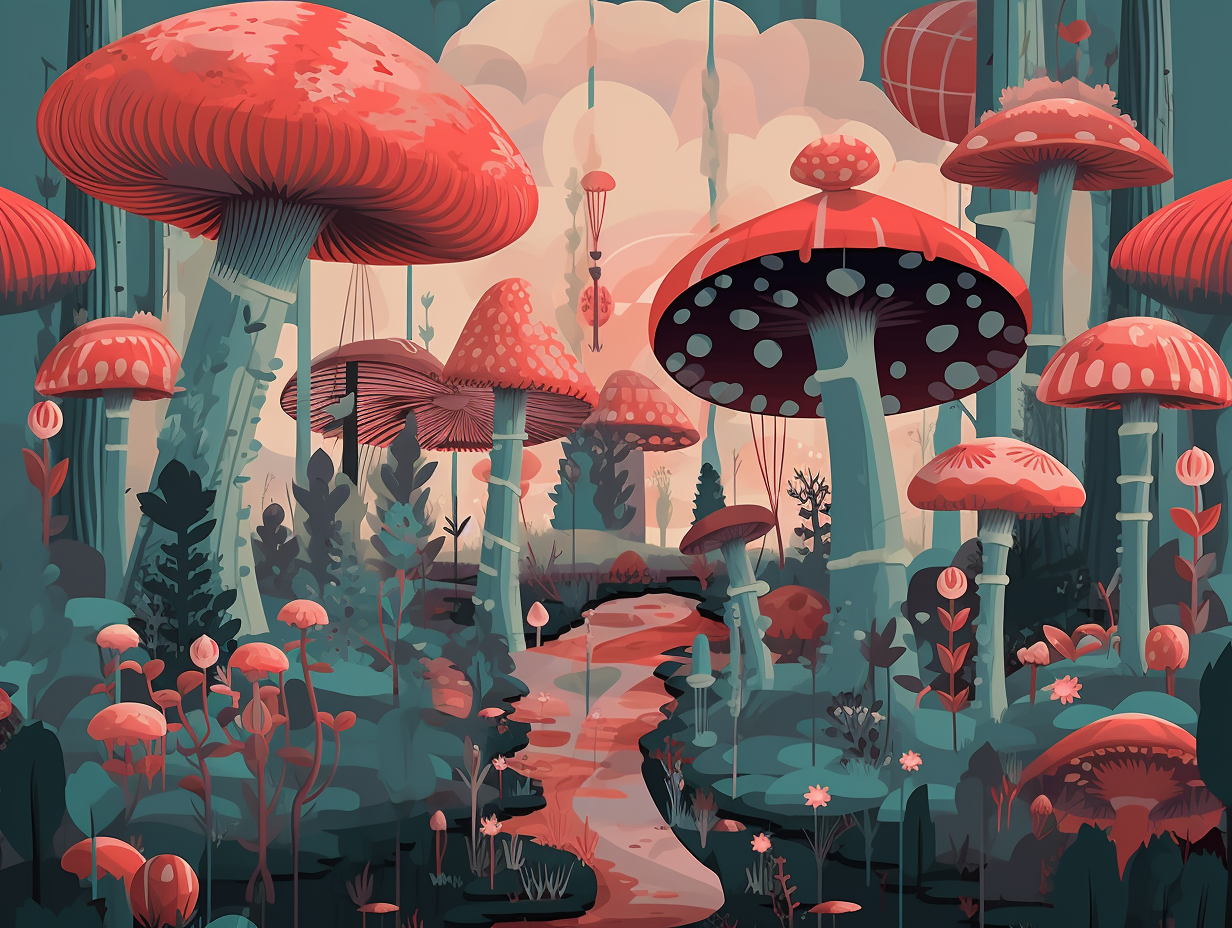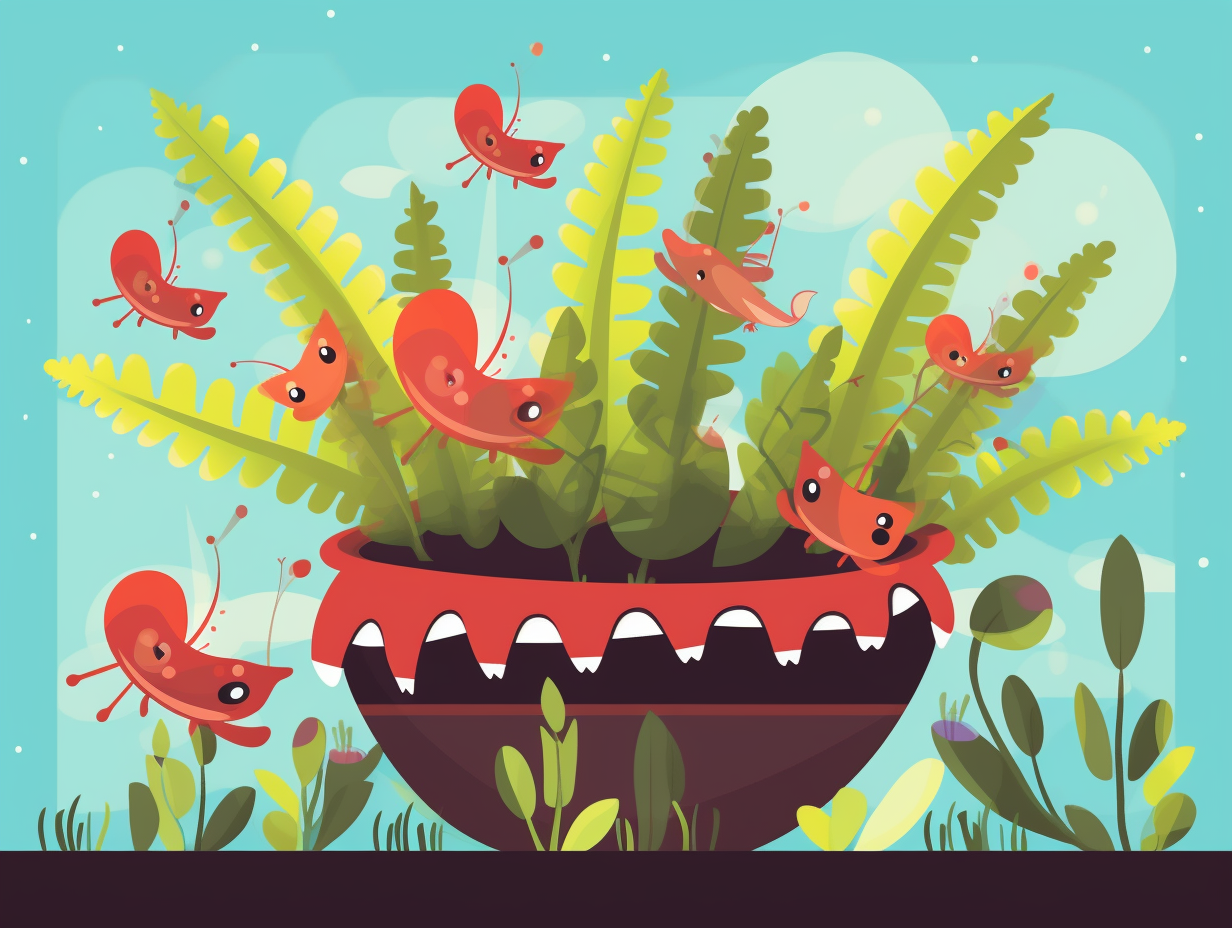Discover the Magic of Nature: Top 12 Fascinating Facts About Photosynthesis!

1. Earth's Atmospheric Bouncers
When life gives you sunlight, make chloro-food: Photosynthetic organisms not only utilize the sun's light to produce chemical energy, but they also act as Earth's atmospheric bouncers, absorbing massive amounts of carbon dioxide and releasing oxygen essential for our existence, ultimately preventing a climatic apocalypse.
Source => khanacademy.org
2. Cacti Hydration Masters
Feeling prickly about saving precious water? Turns out, our cacti friends are masters of hydration conservation, performing a dance with sunlight, carbon and malic acid to ensure they never dry out: CAM photosynthesis allows these spiky survivalists to absorb carbon dioxide at night, store it as malic acid, and take care of their photosynthesis business in the cool of the day, reducing water loss and making sure that nearly all of those tasty cactus fruits won't go thirsty.
Source => en.wikipedia.org

Did you know plants have their own way of communicating through scented signals? Discover how they warn each other of dangers and invite some unexpected guests!
=> Fun Facts about Plants
3. Green Fashionistas
Feeling a bit green with envy, are we? Well, plants have mastered the art of absorbing energy from sunlight while donning their verdant, fashionable hue: Chlorophyll, the main pigment in photosynthesis, captures all visible light wavelengths except green and yellow-green, which is reflected back to our eyes and creates the lush, green world around us; and with the help of accessory pigments like chlorophyll b and beta-carotene, plants maximize their energy intake from the sun's rays.
Source => biology.arizona.edu
4. Green Party's Disco Outfits
When the green party throws a disco, they know to prevent color clashes they need different outfits to cover all the right wavelengths: chlorophyll-a absorbs the violet-blue and orange-red party lights, while chlorophyll-b rocks the blue light energy. Together, they make sure photosynthesis gathers enough energy to feed and power the whole living world!
Source => biologywise.com

5. Prochlorococcus, Our Oxygen Hero
Feeling blue? Don't worry, Prochlorococcus has got you covered! This little green micro-minion will make sure you don't run out of air, even if you misplaced your leafy oxygen-makers: Prochlorococcus, a tiny marine bacterium, is responsible for producing up to 20% of the Earth's oxygen, which is significantly more than the combined efforts of all our tropical rainforests.
Source => oceanservice.noaa.gov
6. Reverse "Take My Breath Away"
Photosynthesis: Nature's sneaky version of "take my breath away" but in reverse! Plants are actually playing the role of Berlin here, belting out oxygen like a classic 80s hit: The process not only generates glucose to fuel our leafy friends but also treats us to a sweet serenade of O2 as a byproduct - essential for us breathing organisms, without which life as we know it would be gasping for air.
Source => khanacademy.org
7. Manganese: The Photosynthesis Wingman
Manganese: the unsung hero and matchmaker that you never knew your mitochondria had a crush on! It's no joke that this essential micronutrient plays a vital role in the much-loved photosynthesis saga by helping our humble photosystem II catch a light and bring CO2 and water together in sweet, sweet carbohydrate matrimony. Without our wingman manganese, the green spark would fizzle out, leaving a broken chain reaction behind. Just like that, the earth would miss out on the all-important CO2 and water union that fuels life as we know it!
Source => omexcanada.com
8. Far-Red Corner Rebels
In a world where plants seem to play by their own rules, some rebellious flora have decided to dance in the far-red corner of the light spectrum, just to be edgy: Scientists have identified a new type of chlorophyll called Chl f, which is crucial for photosynthesis in these plants and absorbs far-red light, ultimately shedding light on its function and potential applications in solar energy.
Source => innovationnewsnetwork.com
9. Nature's Original Green Energy
Before there was solar power and juice cleanses, Mother Nature had her own green energy solution and veggie buffet: Photosynthesis dates back to around 3.2 to 3.5 billion years ago, making it one of the earliest metabolic processes on Earth, responsible for providing food and most of our energy resources through the magnificent storage process of solar energy.
Source => ncbi.nlm.nih.gov

10. Chloroplast Multitaskers
Chloroplasts: the ultimate multitaskers of the plant world. They're not just solar panels and energy factories; they're the plants' private chefs, chemists, and recyclers, too! The serious reveal: These tiny, green powerhouses are responsible for converting CO2 to carbohydrates during photosynthesis, generating ATP, synthesizing amino acids, fatty acids, and membrane components, and even reducing nitrite to ammonia, a crucial step for incorporating nitrogen into organic compounds. Talk about a full plate of responsibilities!
Source => ncbi.nlm.nih.gov
11. Oxygen-Concocting Sunbathers
Plants, notoriously known for their sunbathing habits, are in fact Earth's best oxygen-concocting machines: During photosynthesis, they harness sunlight to transform carbon dioxide into oxygen, subsequently releasing it into the atmosphere to sustain life as we know it.
Source => nhpbs.org
12. Antioxidant Bouncers
When plants party a bit too hard during their daily photosynthesis fiesta, they occasionally produce some funky unwelcome guests called reactive oxygen species (ROS): But fear not, our green friends have evolved some seriously slick antioxidant bouncers to escort these volatile ROS party crashers out, keeping their cellular dance floor in harmonious, oxidative balance.
Source => frontiersin.org
Related Fun Facts




















